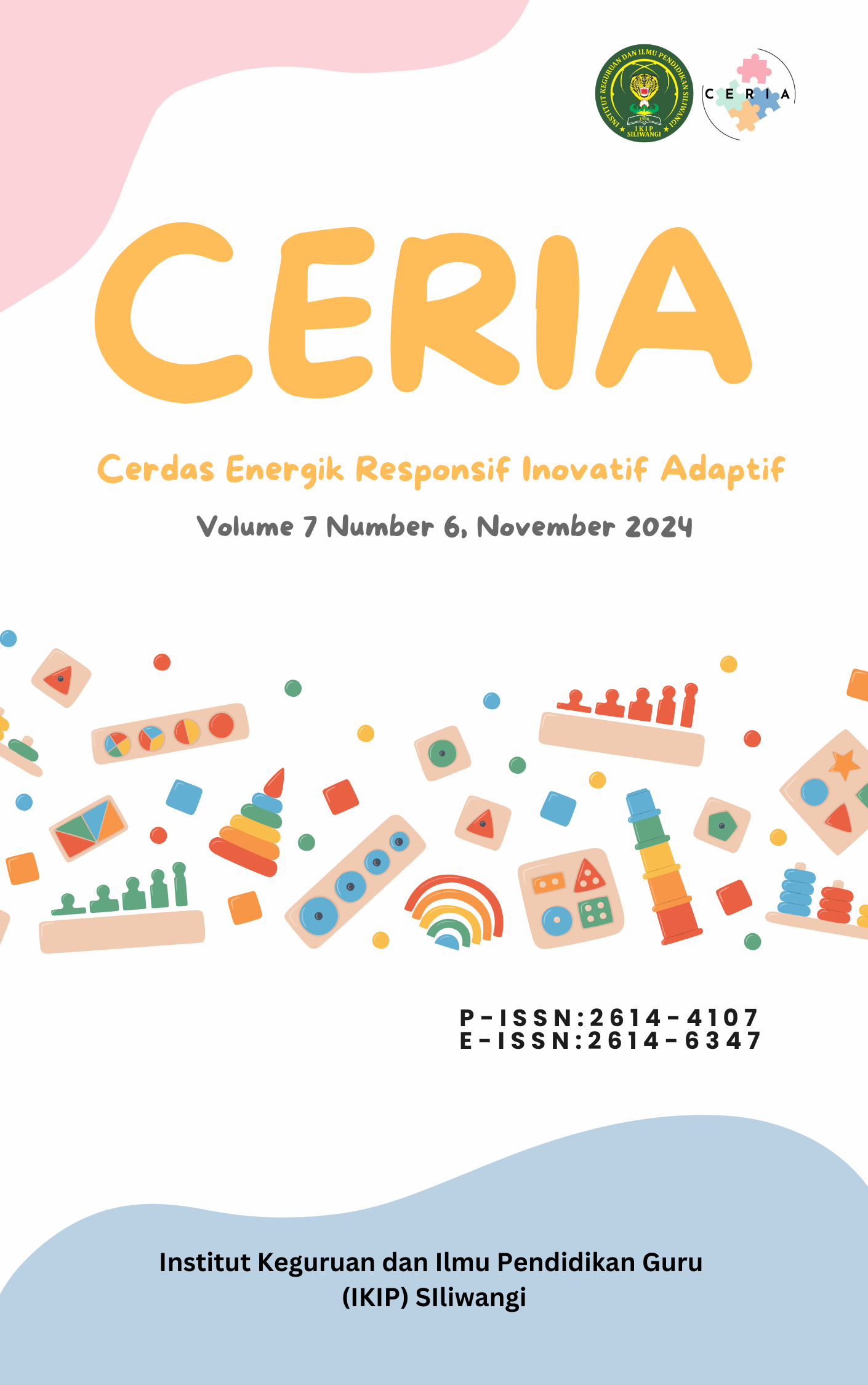Pengembangan Media Spindel Box untuk Meningkatkan Kemampuan Matematika Dasar Anak Usia Dini
Keywords:
Basic Math Skills, Spindle BoxAbstract
The characteristics of early childhood learning are used as a reference for the process of teaching and learning activities. Number material is one of the things that still has problems in learning activities. Basic mathematics needs to be introduced to students, with the aim that children can know the number of objects and recognize numbers so that basic mathematical abilities in factoring can be improved, one of which is through learning media, namely the spindle box. This research aims to determine the feasibility of developing spindle box media to improve the basic mathematical abilities of group A. The R&D method used in this research is the Borg and Gall development model. The research subjects were group A children; data collection techniques were carried out using interviews, observation, and validation questionnaires. The data obtained was analyzed using descriptive qualitative data analysis and statistical techniques. This data is obtained from product assessments in the form of suggestions and input from experts and data analysis in the form of total scores calculated using statistical techniques from the results of questionnaire assessments. Based on the results of feasibility validity by material experts and media experts, it was obtained 93.6% in the "feasible" category. The teacher's assessment of the spindle box media was 82.5% in the "decent" category. Then the result of increasing basic mathematics skills in children was 83%, with the category developing as expected. These results show that the development of spindle box media is declared very "feasible.".
References
Ismet, S., & Marlina, S. (2019). Pengaruh media spindle boxes terhadap kemampuan berhitung anak. Jurnal Ilmiah Pesona PAUD, 6(2), 68-79. https://doi.org/10.24036/101895
Cecep. B. (2013). Media pembelajaran; Manual dan digital. Bogor: Ghalia Indonesia
Fauziddin, M. (2015). Peningkatan kemampuan matematika anak usia dini melalui per-mainan jam pintar di taman kanak-kanak pembina kec. Bangkinang Kota. Jurnal ob-sesi: jurnal pendidikan anak usia dini, 1(1), 49-54. 10.31004/obsesi.v1i1.55
Gettman, D. (2016). Metode pengajaran montessori tingkat dasar. Yogyakarta : Pustaka Pelajar.
Hermawati, (2015). Metode montessori pendidikan karakter yang mengembangkan. Su-rabaya: CV. Garuda Mas Sejahtera.
Kurniati, A. (2015). Mengenalkan matematika terintegrasi islam kepada anak sejak dini. Suska Journal of Mathematics Education, 1(1), 1-8. http://dx.doi.org/10.24014/sjme.v1i1.1326
Novianti, R. (2015). Perkembangan permainan roda pintar untuk meningkatkan kemam-puan berhitung angka anak usia 5-6 tahun. Riau : Educhild
Nurhafizah, N. (2018). Pelatihan pembuatan media pembelajaran anak usia dini menggunakan bahan sisa. Early Childhood: Jurnal Pendidikan, 2(2b), 44-53. https://doi.org/10.35568/earlychildhood.v2i2b.288
Rosyid. Z, Sa’diyah. H, Septiana. H, (2019). Ragam media pembelajaran. Malang: Literasi Nusantara
Sugiyono. (2017). Metode kuantitatif, kualitatif, dan R&D. Bandung: CV Alfabeta.
Susilana, R., & Cepriyana (2009). Media pembelajaran. Bandung: CV. Wacana Prima
Undang-Undang Dasar Negara Republik Indonesia No. 41. (2003). Presiden republik Indonesia
Warsito, W. (2018). Peningkatan sikap kedisiplinan melalui apel pagi siswa Min Nglawu Sukoharjo. Jurnal Komunikasi Pendidikan, 1 (2), 155–161. https://doi.org/10.32585/jkp.v1i2.27


